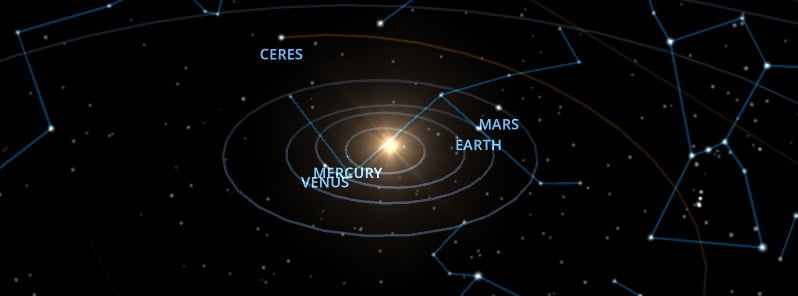Study shows how Earth-Sun distance dramatically influences annual weather cycles in the equatorial Pacific in a 22 000-year cycle

A new research led by the University of California, Berkeley, demonstrates that one driver of annual weather cycles in the eastern equatorial Pacific Ocean—in particular, a cold tongue of surface waters stretching westward along the equator from the coast of South America—has gone unrecognized: the changing distance between Earth and the Sun.
- The cold tongue influences the El Niño-Southern Oscillation (ENSO), which impacts weather in California, much of North America, and often globally.
- The finding of this study calls for a reassessment of the current understanding of the Pacific cold tongue annual cycle and a re-evaluation of tropical Pacific palaeoclimate records for annual cycle phase changes.1
The Earth-Sun distance slowly varies over the course of the year because Earth’s orbit is slightly elliptical. Currently, at its closest approach—perihelion—Earth is about 4.8 million km (3 million miles) closer to the Sun than at its farthest point, or aphelion.
As a result, sunlight is about 7% more intense at perihelion than at aphelion.
In the new study, researchers demonstrate that the slight yearly change in our distance from the Sun can have a large effect on the annual cycle of the cold tongue. This is distinct from the effect of Earth’s axial tilt on the seasons, which is currently understood to cause the annual cycle of the cold tongue.2
Because the period of the annual cycle arising from the tilt and distance effects are slightly different, their combined effects vary over time, said lead researcher John Chiang, UC Berkeley professor of geography.
“The curious thing is that the annual cycle from the distance effect is slightly longer than that for tilt—around 25 minutes, currently—so over a span of about 11 000 years, the two annual cycles go from being in phase to out of phase, and the net seasonality undergoes a remarkable change, as a result,” Chiang said.
Chiang noted that the distance effect is already incorporated into climate models—though its effect on the equatorial Pacific was not recognized until now—and his findings will not alter weather predictions or climate projections.
But the 22 000-year phase cycle may have had long-term, historical effects. Earth’s orbital precession is known to have affected the timing of the ice ages, for example.
The distance effect—and its 22 000-year variation—also may affect other weather systems on Earth. The ENSO, which also originates in the equatorial Pacific, is likely affected because its workings are closely tied to the seasonal cycle of the cold tongue.
“Theory tells us that the seasonal cycle of the cold tongue plays a key role in the development and termination of ENSO events,” said Alyssa Atwood, a former UC Berkeley postdoctoral fellow who is now an assistant professor at Florida State University in Tallahassee.
“Because of this, many of ENSO’s key characteristics are synced to the seasonal cycle.”
References:
1 Two annual cycles of the Pacific cold tongue under orbital precession – Chiang et al. – Nature – November 9, 2022 – DOI: 10.1038/s41586-022-05240-9
2 Earth-sun distance dramatically alters seasons in the equatorial Pacific in a 22,000-year cycle – University of California – Berkeley – November 9, 2022
Featured image credit: Solar System Scope (November 10, 2022)

Commenting rules and guidelines
We value the thoughts and opinions of our readers and welcome healthy discussions on our website. In order to maintain a respectful and positive community, we ask that all commenters follow these rules.